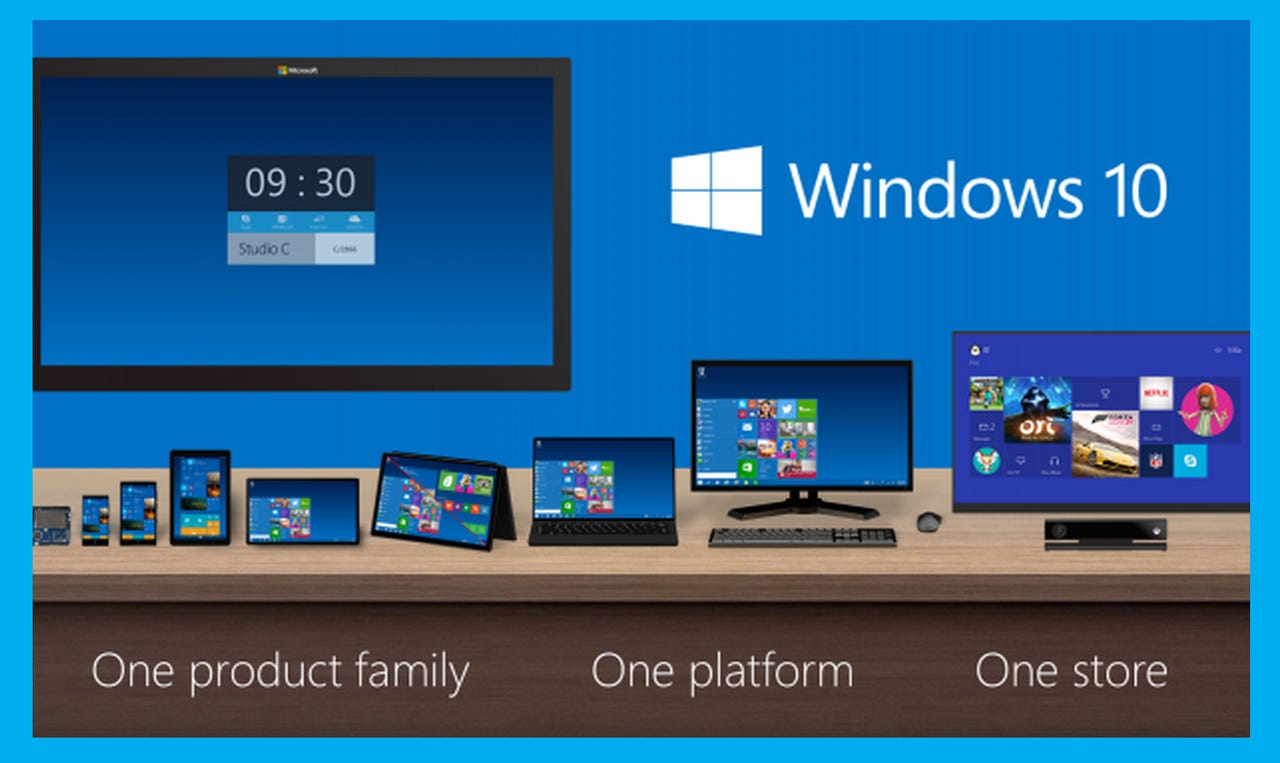Microsoft's Windows 10: What's new and how to get the preview bits

Thanks to many leaks leading up to Microsoft's reveal about its next version of Windows, there wasn't a whole lot that those of us who've been paying attention didn't know. But Microsoft execs did provide a few updates about the operating system known as Windows Threshold.

First, of course, is the name. Microsoft is calling its next Windows release "Windows 10," not Windows 9, as many had expected. The reason? It's going to be the last major version of Windows (my sources say) and Microsoft wanted to signify it will be a big and cross-platform release.
The Windows 10 core will run on PCs, tablets, Windows Phones and even the Xbox at some point in the future. The user interfaces will be tailored for each type of device, but there will be a common core of operating system elements that will work across all these platforms. With Windows 10, Microsoft will be consolidating its various app stores, officials confirmed during a preview event on September 30 in San Francisco.
More Windows 10
Tomorrow, on October 1, Microsoft will open up its preview.windows.com site so that those interested in testing the Enterprise Technical Preview version of the operating system can download the early bits. Those who sign up through the preview site will be enrolled in Insiders Program. Via this program, Microsoft will push regular updates through Windows Update to the initial tech preview over the coming months.
Insiders also will be asked to provide feedback in a variety of forms to Microsoft about the features they like and dislike.
The Enterprise Technical Preview (Build 9841) will work on x86 machines only. Microsoft is not yet making available a test build of the ARM version of Windows 10. Microsoft officials said to expect that more consumer-focused preview to arrive in early 2015. (Previous leaks have pegged availabiity of the consumer preview to the January/February 2015 timeframe).
Some time in the coming months (I'm betting late October at TechEd Barcelona), Microsoft will go public with what it's doing on the Windows Server and systems management front with Windows 10. And at the next Build conference in April 2015, Microsoft will talk more about the developer story around Windows 10, officials confirmed today.
Terry Myerson, head of Microsoft's Operating Systems Group, told those of us attending the event today that Microsoft is aiming to deliver the completed version of Windows 10 by mid-2015. Previous leaks have indicated that Microsoft is aiming to deliver Windows 10 by "spring 2015."
Most of the new features that Myerson and Joe Belfiore, who runs Microsoft's operating system experience team, demonstrated for the first time publicly on September 29, had leaked via sources.
The new Start Menu, virtual desktops and windowed Metro-Style apps running on the Desktop are all part of the Enterprise Technical preview build. The charms bar is still part of the Enterprise Technical Preview at this point, but how charms will be supported going forward will be changing, Belfiore confirmed.
There were a couple of new features that Microsoft execs demonstrated, including a new Snap Assist feature that is aimed at helping users figure out how to "snap" apps side-by-side. Users will be able to snap apps horizontally and vertically with Windows 10. A new task view will help users navigate between Virtual Desktops.
Another new feature, which is not yet part of the Windows 10 preview build, is called "Continuum." Continuum will allow users with two-in-one devices who can connect and disconnect keyboards to more easily transition between the different modes. When a keyboard is disconnected, a back button will appear on the task bar to help users to more easily navigate.
Windows 7 users are among those Microsoft knows are key in winning over to Windows 10. Belfiore said Microsoft's goal is to make Windows 7 users feel as though they are upgrading from a Prius to a Tesla with Windows 10 without having to relearn how to drive.